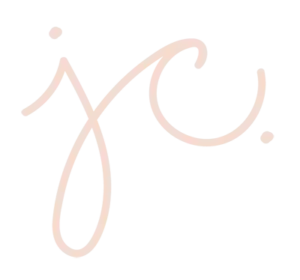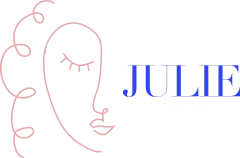Subscribe On:
Full Transcript:
Hey everyone, this is Julie. I hope you’re doing amazing. I wanted to talk to you today about a question that I see come up all the time, which is, how do you know if your market is oversaturated with offers?
I see this a lot because people don’t want to put themselves out there and feel like the competition is too strong and I’m going to do all this work and spend all this money and then it’s not going to go anywhere. So I understand that feeling. So this is some of my advice that I would love to dole out unsolicited here.
Number one, everything is saturated. So I don’t know if you ever watched Shark Tank, but I did. And it was so funny because every time someone would come into the tank, the first comment from the sharks was like, “Ah, this is a really competitive market.” It was like, “Oh you’re selling lipstick? Oh, that’s really competitive.” “Oh, you’re selling juice. Oh, that’s really competitive.” “Oh you’re selling jeans. Oh, those are really…”
It was just like, it was like that was a default thing. So everything is competitive. So I would not make that your sort of baseline of, “Oh I should only get into markets that are not competitive.” Non-competitive markets usually mean that nobody has figured out how to monetize it. It doesn’t mean that there’s wide open blue ocean for you to just come step and play and dance in. You know what I’m saying?
So the key, the question you need to ask is how do I stand out in the competition, because that is a question you have to think about. And any market you go into, I recommend be competitive. So I think people think there’s a difference between competitive and over saturated. And you know, I’m not exactly sure where that line is. But if we take, I don’t know, let’s say we take makeup for example. That’s incredibly competitive. You know, you go to CVS down the street and you’ve got Maybelline and Cover up or Cover Girl. I don’t wear makeup, can you tell? Revlon, and Este Lauder, I can’t think of anymore.
So if another make up company comes on the scene, it’s going to fight for shelf space, correct? Of course. However, if a new makeup company comes on the scene and let’s say it’s vegan friendly and hypo allergenic, and gives 50% of its proceeds to, I don’t know, women in poor countries who are often times victims of trafficking or something like that. Now all the sudden it’s got a reason to stand out because it’s going to target a market that wouldn’t buy other makeup products, people who are environmentally conscious and that kind of thing, or people with super sensitive skin.
I remember when Burts Bees came out, I felt like it was this big thing even though there was a million other types of chapstick on the market. Burts Bees came out and really had this sort of feel good organic angle before organic was cool.
So there are times when I look at a market and I say, “Gosh, that’s really crowded.” Even before we launched Offer Cure I had my own set of imposter syndrome. I thought, “This is a really crowded market. Lots of people teach on offer.” And yet, there are thousands now of students who are like, “Thank you so much for creating the Offer Cure. That was amazing.” And it wasn’t like I came up with some new, you know, magic bullet. But I came up with a new way to teach it that created almost virality where people started sharing and talking about the program and told other people about it, and all that kind of stuff. And that was me entering a really competitive market.
So when you are building an offer, so if you’re building an offer in a health market, in a wealth market, in a relationship market, don’t worry if it’s saturated. Ask yourself, stand at the point where you say, “What can I create that once created, the students will say to me, (or customers or whatever) I am so glad you created that product. I don’t know where I would be without that product.”
Ask yourself that question. What kind of product can I create that once created, when it has customers and students and things like that, they will say, ‘I’m so thankful you created that product.’ That will immediately help you dial in what it is about the product that has to be different, that has to be unique, that has to be creative, that has to be simple, that has to be a shortcut, whatever it is that will make people so grateful.
Even the Funnel Gorgeous brand, I mean, templates have been around forever. Clickfunnels marketplace and Creative Market. But it was the blend of Cathy’s really, really, good design with my really, really good conversion/marketing brain to create almost internet marketing designer level products. There were lots of people who were selling templates who were internet marketers, who weren’t really designers, so the designs looked okay, but they were really more like marketers.
And t hen you have designers who are selling on creative market types of sites, that are super, super beautiful but don’t have a lot of real world application. And Cathy and I entered into that little space, and now we have lots of customers who say, “I’m so thankful you did this for us, you created this for us.”
So that’s the question you want to ask yourself. Not is it crowded, is it competitive? You want to enter competitive markets, you just want to carve out your spot. And for people who are like in the health space, I hear this all the time. “Well, there’s only so many ways to teach someone how to lose weight.” Right, and that’s true. You’re not going to come up with some medical breakthrough in your product, or your coaching that hasn’t already been discovered. So you might be thinking this and go, “Well, what can I actually offer that’s even new to them?”
And I would say, you don’t have to worry about creating something new or medically significant or some breakthrough. What you’re really asking is how do I deliver it? What container, what methodology do I use to deliver that information so that it gets results? Because I could simply hand you a science journal on weight loss, and you could read it and learn and implement. But that would be a very, very difficult way for you, because number one you probably don’t understand a lot of the terminology, you’d have to draw down your own conclusions, you’d have to figure out your own application, you’d have to then go out and do it, you’d have to execute on it, you’d have to execute on it in a world that’s not ideal for weight loss, all that kind of stuff.
There’s like 1700 steps, but that’s still the right information, correct. Versus someone who has taken that information and curated it in such a way that it’s on an app and you know, has meal plans and all that kind of stuff. And so you’re like, “Well a million people have done that.”
So if you imagine the science journal on one end, and the solution on the other, every time the market gets more and more crowded, it’s like there are people that are creating the next step closer to like full immersion. So you’ve got people now who have taken the science, deduced it, app’d it, meal planned it, you know work outs in your pocket. They’ve done all that hard work. So you’re like, “That’s it, they’ve already cornered that market.”
That’s the point at which you dig deep, because you’re like, “Okay, they cornered that market, but did they corner that market for everybody or just a certain group of people.” Because are there different groups of people that can benefit. So what if you take all of that and you’re like, “Okay, I’m going to create this program for people who have sedentary jobs, for people who work in an office. The office job diet.’ And this is specifically for people who work in a 9 to 5 who have to sit in a cubical all day, who can’t get out except for their lunch break, who often times have to buy meals.
And now all the sudden, now you can create a program that’s so specific to that particular environment that it could catch and go viral. So now it’s like, ‘Oh, okay. I literally just figured out how to stand out.” So you can take it from the avatar standpoint to create that sort of unique idea. You could take it from the, you could still serve the same avatar but you could focus very specifically on one key thing.
Like maybe you’re health and weight loss specifically for plant based people. Or you’re health and wellness for people who want to lose weight and they happen to be pregnant and obese at the same time. You know what I mean. So you can tackle one specific piece of weight loss and bring something new to the table, or something unique.
And sometimes, even if you can’t figure out a unique angle that way, you can figure out a unique angle in terms of if you can deliver the result faster, better, easier than somebody else, you will stand out. So that’s really kind of what Offer Cure did, our course. Because it wasn’t like we were trying to do offers for a specific niche or we weren’t trying to just pick one little piece of the offer, we really went out into the big waters. But what we said is we’re going to make you get a result fast. And we actually had to deliver on that. You know, that’s where the issue is, you have to be able to deliver on exactly what you’re promising. And once you do, it stands for itself. And now, you know we have all kinds of authority in the offer space because of that program.
Okay, so I hope that helps for those of you guys who are saying, “Well, how do I know if my market is too saturated?” the answer to the question is everything is too saturated. That shouldn’t be the judge of what you decide to do. And the hard work is in figuring out how you can stand out in the midst of it.









0 Comments